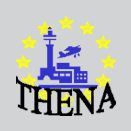

The Fifth Framework Programme (FP5) set out the priorities for the European Union's research, technological development and demonstration (RTD) activities for the period 1998-2002. These priorities have been selected on the basis of a set of common criteria reflecting the major concerns of increasing industrial competitiveness and the quality of life for European citizens.
The Fifth Framework Programme had two distinct parts: the European Community (EC) framework programme covering research, technological development and demonstration activities; and the EURATOM framework programme covering research and training activities in the nuclear sector.
FP5 differed considerably from its predecessors. It was conceived to help solve problems and to respond to the major socio-economic challenges facing Europe. To maximise its impact, it focused on a limited number of research areas combining technological, industrial, economic, social and cultural aspects. Management procedures also were streamlined with an emphasis on simplifying procedures and systematically involving key players in research. Programmes and Key Actions.
A major innovation of the Fifth Framework Programme was the concept of "Key actions". Implemented within the specific programmes, these flexible instruments were targeting at achieving solutions to topics of great concern in Europe. "Key actions" had mobilised the wide range of scientific and technological disciplines - both fundamental and applied - required to address a specific problem so as to overcome the barriers that exist, not only between disciplines but also between the programmes and the organisations concerned.

THENA- THEmatic Network on Airports - was a research and development network focusing on airports. THENA had the following objectives:... Read more...